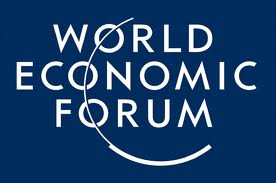 Report on Direct Investing by Institutional Investors: Implications for Investors and Policy-Makers assesses the trend towards institutional investors investing directly in private equity, infrastructure and real estate
Report on Direct Investing by Institutional Investors: Implications for Investors and Policy-Makers assesses the trend towards institutional investors investing directly in private equity, infrastructure and real estate- Estimates that $700 billion is invested directly in illiquid assets by asset owners, projected to grow slightly ahead of overall institutional asset growth in the near to medium term.
- Focus on motivations for and challenges related to direct investing as well as implications for asset owners, asset manager and policy-makers
New York, USA, 20 November 2014 – The World Economic Forum today launched Direct Investing by Institutional Investors: Implications for Investors and Policy-Makers. In the report, it is estimated that about $700 billion is invested directly in illiquid assets based on estimates of total institutional assets under management and allocations to illiquid assets by sector, and then filtering for size of institutions, governance structures and motivation to invest directly.
“With the growth of direct investing, we see the maturing of an investment ecosystem, with asset owners and assets managers seeking to optimize their interactions around specific strategies,” said Michael Drexler, Senior Director and Head of Investors Industries at the World Economic Forum. “The major risk lies in players rushing into strategies while ignoring their constraints.”
The potential for improved returns, greater control and increased value for money has led many institutional investors to explore the extent to which they could invest in private equity, infrastructure, real estate and emerging alternatives directly. However, as the report highlights, there are many challenges to investing directly and indirect costs associated with it. An institution needs to be large enough to afford the cost of staffing and supporting teams making direct investments. Moreover, it must have a governance framework robust enough to manage the downside risks of direct investing.
“Direct investing in illiquid assets has come of age since the financial crisis. Asset owners now have choices in how they can invest in private markets, which partly depend on size,” said Julia Hobart, Partner, Oliver Wyman. “Many mega funds with assets in excess of $50 billion have built internal departments that make their own investment decisions. In the mid-tier, funds with more than $5 billion are using hybrid methods that include some co-investing and some outsourcing to asset managers. Smaller funds tend to outsource decisions.”
The report, written in collaboration with Oliver Wyman, also explores the wider implications of the growth in this strategy. Changes to the models for how asset owners allocate long-term capital are noteworthy for companies, governments and developers potentially receiving capital; for asset owners and asset managers; and for society.
The report also concludes that the most important change by institutions into direct investing has already happened and that direct investing is, therefore, likely to grow only slightly ahead of overall institutional asset growth over the near to medium term.
The World Economic Forum is an international institution committed to improving the state of the world through public-private cooperation in the spirit of global citizenship. It engages with business, political, academic and other leaders of society to shape global, regional and industry agendas.
Incorporated as a not-for-profit foundation in 1971 and headquartered in Geneva, Switzerland, the Forum is independent, impartial and not tied to any interests. It cooperates closely with all leading international organizations (www.weforum.org).
